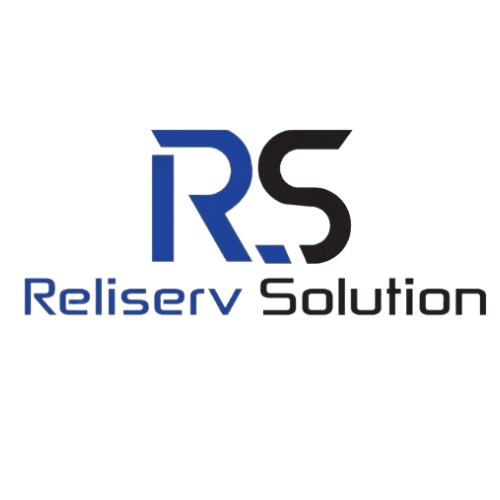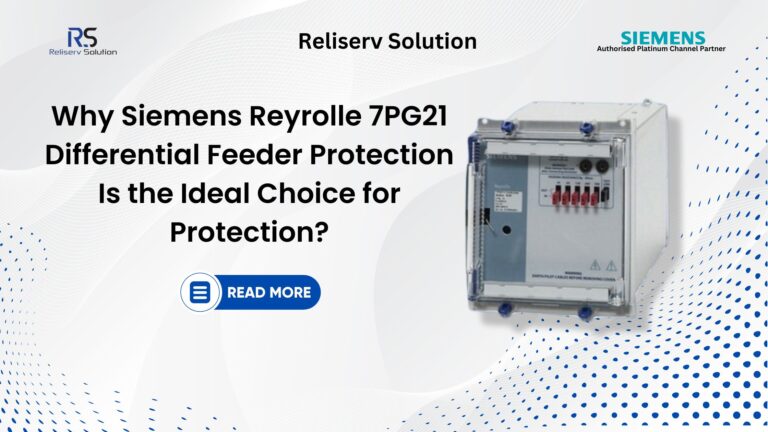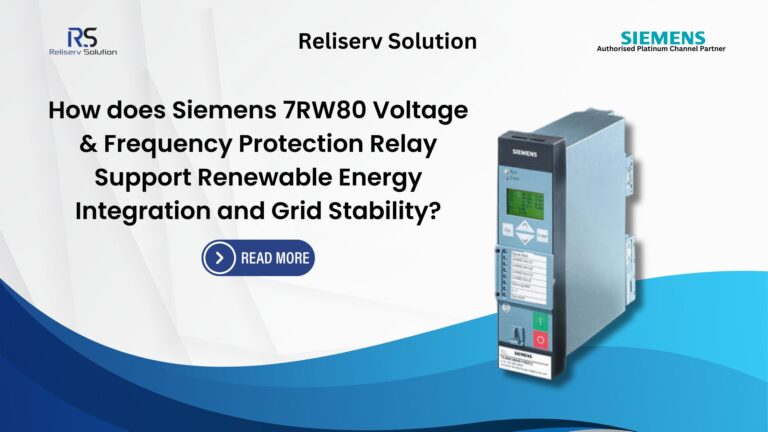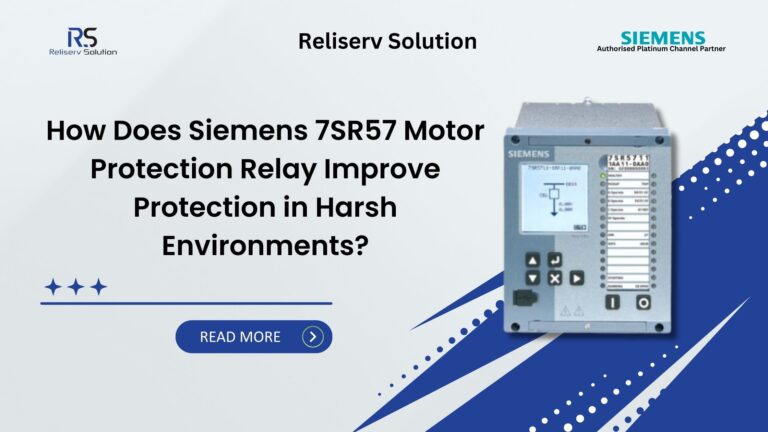The modernization of electrical substations has become a necessity as power systems evolve. Traditional substations rely on copper-based wiring, making them prone to inefficiencies, high maintenance costs, and limited scalability. The shift toward digital substations is crucial, and Siemens Process Bus Solution is at the forefront of this transformation.
Siemens Process Bus Solution offers seamless integration, real-time monitoring, and enhanced data security, making it an essential technology for the future of power distribution. Furthermore, understanding the Process Bus Solution Cost and choosing the right Process Bus Solution Provider ensures optimal performance and long-term reliability. This blog explores how Siemens Process Bus is revolutionizing substations and why it is the ideal choice for digital transformation.
Understanding the importance of the Siemens Process Bus Solution
Siemens Process Bus Solution is a cutting-edge technology designed to enhance substation automation. It replaces traditional copper wiring with fiber-optic communication, reducing material costs, installation efforts, and maintenance complexities. By digitizing signal transmission, Siemens Process Bus minimizes errors, improves accuracy, and enhances overall operational efficiency.
The Siemens Process Bus revolutionizes substation automation by placing a merging unit close to the instrument transformer. This unit captures the measured transformer values, digitizes them, and transmits the data to one or more protection devices using a sampled measured values (SMV) data stream over a fiber-optic Ethernet network. By digitizing both analog and digital signals at the process level, this technology enhances flexibility, efficiency, and reliability in substation automation systems.
Traditional Method: Conventional Instrument Transformer Setup
In conventional setups, instrument transformers are connected to protection devices using parallel copper wiring. While this established method has been widely used, it comes with several challenges:
- Extensive wiring requirements
- Physical limitations, including accuracy constraints and saturation issues
- Risk of open CT circuits
By replacing traditional copper connections with digital data transmission, Siemens Process Bus optimizes performance, enhances safety, and reduces infrastructure complexity, making it a superior choice for modern substations.
Key Features of Siemens Process Bus Solution
- Seamless Communication: Digitalized signals reduce noise, eliminate electromagnetic interference, and enhance communication reliability between field devices and control centers.
- Improved Safety: Eliminating extensive copper wiring reduces fire hazards and enhances worker safety.
- Enhanced Reliability: Fault detection and self-diagnostic capabilities ensure quick issue resolution and minimize downtime.
- Cost Efficiency: A reduction in physical wiring significantly lowers installation and maintenance costs.
- Scalability and Flexibility: It easily adapts to future grid expansions and system upgrades.
- Cybersecurity Protection: Advanced encryption and security protocols safeguard the network against cyber threats.
- Interoperability: Compatible with multiple devices and communication protocols, ensuring smooth integration across various substation components.
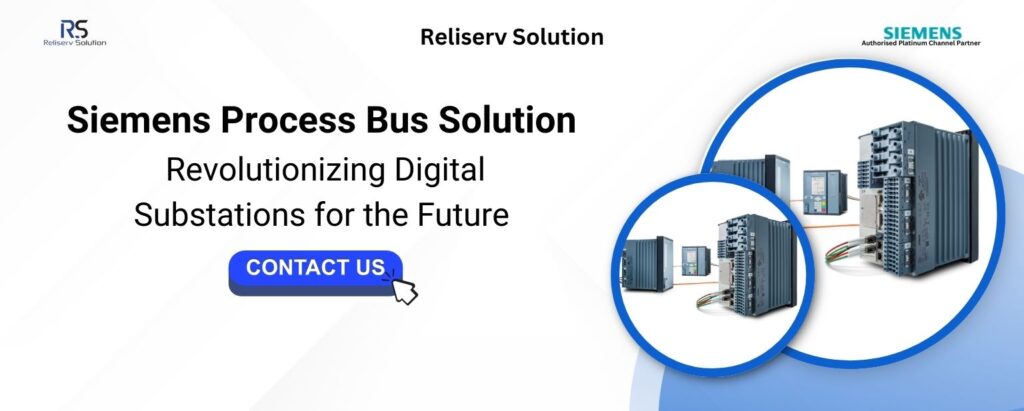
Benefits of the Siemens Process Bus Solution in Digital Substations
Digital substations are becoming the new standard for power distribution networks. Moreover, Siemens Process Bus is central to this evolution, providing enhanced monitoring, control, and efficiency. Below are the significant benefits of adopting Siemens Process Bus Solution in modern substations:
- Reduction in Copper Wiring: Traditional substations require extensive wiring, leading to increased costs and maintenance issues. The Siemens Process Bus minimizes these requirements, leading to significant cost savings.
- Real-time Monitoring and Diagnostics: The system provides continuous real-time data analysis, enabling proactive maintenance and reducing unexpected failures.
- Improved System Efficiency: Optimized data transmission ensures accurate measurements and faster decision-making.
- Scalability for Future Needs: The system’s flexible architecture allows easy upgrades without major infrastructural changes.
- Environmental Sustainability: Reducing copper use decreases environmental impact, making substations more eco-friendly.
The Role of Process Bus in Grid Modernization
With power grids becoming more complex, digital transformation is crucial for enhanced efficiency and sustainability. Siemens Process Bus Solution plays a pivotal role in modernizing substations by integrating digital communication and automation technologies.
Additionally, choosing the right Process Bus Solution Provider ensures smooth implementation and long-term operational success. Siemens, a global leader in power automation, delivers state-of-the-art solutions tailored to industry needs.
Cost Considerations of the Process Bus Solution
Understanding the Process Bus Solution Cost is essential for organizations planning to invest in digital substation technology. The cost varies depending on several factors, including:
- Substation Size and Complexity: Larger substations require more equipment and integration, affecting overall costs.
- Existing Infrastructure: Retrofitting an existing substation may have different cost implications compared to new installations.
- Device Integration: The number of Intelligent Electronic Devices (IEDs) and communication modules impact pricing.
- Cybersecurity Measures: Implementing advanced security protocols may increase initial investment but ensures long-term protection.
Despite the initial investment, Siemens Process Bus offers long-term cost savings through reduced maintenance, improved efficiency, and minimized operational risks.
Selecting the Right Process Bus Solution Provider
Choosing the right Process Bus Solution Provider is critical to ensuring seamless implementation and optimal performance. Factors to consider when selecting a provider include:
- Industry Expertise: Look for providers with proven experience in digital substation automation.
- Customization Capabilities: A good provider tailors solutions to specific operational needs.
- Technical Support and Training: Reliable customer support ensures smooth system operation and maintenance.
- Compliance with Standards: Ensure the solution meets international regulatory and cybersecurity standards.
- Scalability: The provider should offer scalable solutions that support future expansion needs.
Siemens, as a global leader, provides a high-quality Siemens Process Bus Solution backed by decades of innovation and expertise. Their solutions ensure reliability, efficiency, and future-ready capabilities.
Future of Digital Substations with Siemens Process Bus
As energy demands increase, the need for smart and efficient substations grows. Siemens Process Bus Solution represents the future of substation automation, offering enhanced efficiency, safety, and operational intelligence. The integration of artificial intelligence and IoT-based analytics will further improve predictive maintenance and automation in substations.
The continued adoption of Siemens Process Bus will lead to widespread digital transformation in power networks. Future advancements will further optimize performance, making power systems more resilient, adaptable, and secure.
Merging Unit Functionality in SIPROTEC 6MU85:
The SIPROTEC 6MU85 merging unit offers advanced server functionality within modular SIPROTEC 5 devices, featuring an Ethernet communication module (ETH-BD-2FO) for seamless integration into digital substations.
Efficient Data Streaming
- Supports one sampled measured value (SMV) stream per ETH-BD-2FO module
- Accommodates up to 32 analog inputs, including current transformers (CTs) and voltage transformers (VTs)
- Supports 4x CTs and 4x VTs in compliance with IEC 61850-9-2 LE
Scalability & Redundancy
- Allows integration of up to four ETH-BD-2FO modules
- Ensures highly reliable and redundant data transmission using PRP (Parallel Redundancy Protocol)
Standards Compliance & Communication
- Fully compliant with IEC 61869-9 and IEC 61869-13
- Supports IEC 61850-8-1 protocols, including GOOSE, MMS, and merging unit functionality
- Enables precise time synchronization via IEEE 1588v2/PTP
Conclusion
Siemens Process Bus Solution is revolutionizing substation automation, offering unparalleled benefits in reliability, safety, and cost efficiency. Replacing conventional copper wiring with digital communication enhances operational performance and simplifies maintenance. The reduction in Process Bus Solution Cost and seamless integration capabilities make it a preferred choice for power utilities.
Selecting a trusted Process Bus Solution Provider is essential to maximizing benefits and ensuring long-term system reliability. Siemens remains a top choice, delivering innovative solutions that align with modern grid requirements.
With increasing energy demands and technological advancements, digital substations powered by Siemens Process Bus will continue to shape the future of power distribution. Investing in this technology ensures a more reliable, efficient, and sustainable energy network, paving the way for next-generation substation automation.
Siemens Numerical Relays are distributed and supplied by Reliserv Solution, an authorized distributor and Platinum Channel Partner of Siemens. The company’s main office is in Mumbai, Maharashtra. We also offer many panel builders and industries a wide range of services and customized solutions. For assistance or inquiries, please contact us by phone at +917506112097 or via email at [email protected]. By clicking here, you can view the Siemens Process Bus Solution, a well-known Siemens product from Siemens Numerical Relays.
